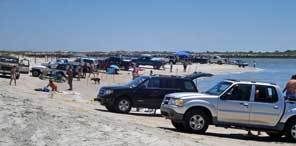 Historic City News reporters were updated this morning by the Office of the Secretary of Defense with predictions that the Gulf of Mexico oil spill could soon reach levels on par with the 250,000 barrels of crude oil lost in the 1989 Exxon Valdez tanker spill.
Historic City News reporters were updated this morning by the Office of the Secretary of Defense with predictions that the Gulf of Mexico oil spill could soon reach levels on par with the 250,000 barrels of crude oil lost in the 1989 Exxon Valdez tanker spill.
In the news bulletin from Sergeant 1st Class Michael J. Carden, Coast Guard Admiral Thad Allen, the national incident commander for the Gulf oil spill, said “By the time we get this leak sealed, the volume that’s out there is probably going to start to approach that much.”
“Our big concern right now is oil that’s coming to shore around Port Fourchon in southern Louisiana and trying to redeploy our forces there to meet that,” he continued. “At the same time, we’re seeing tar balls in Mississippi and Alabama. And this spill has really spread out wide, concerning its perimeter, but it’s really concentrated, heavy starts, throughout the area of about a 200-mile radius.”
In a White House news conference today, Allen outlined the basic command-and-control structure for how oil spill response works. He told reporters that although the federal government has oversight, the spiller is responsible for financing cleanup, equipment and recouping damaging, according to the Oil Pollution Act of 1990.
“In the Gulf of Mexico, the British Petroleum oil company (BP) is the party accountable,” Allen said.
The legislation was passed after the Exxon Valdez spill, and also created a liability trust fund to fund responses where there was no responsible party. The legislation charges Coast Guard area commanders with responsibility in those zones. These captains of the port zones work with state and local officials and stakeholders to develop protection plans, mainly for “sensitive areas,” he said.
Captains of the port zones are present on every single part of the coastline of the United States. When they have to activate a response, the local Coast Guard commander is designated the federal on-scene coordinator and coordinates with state and local governments and directs the responsible party in the cleanup, the admiral explained.
“That is the way we have been prosecuting this case since the explosion on the Deepwater Horizon on the 20th of April,” he said. “Even in advance of the sinking of the drilling unit, we were staging equipment that was against the scenario we would have a worst-case spill.
“We started actually mobilizing equipment salvage engineers and everything right after the event happened into the 21st of April,” he added.
For the Gulf Coast spill, the zone commands were brought under the command of Coast Guard Rear Adm. Marry Landry, because of the size of the spill, Allen said. Landry oversees commanders in Mobile, Ala., which covers Mississippi, Alabama and western Florida.
Landry also supervises a command in St. Petersburg and Key West, Fla.
“If something gets large enough where there’s a national issue,” Allen said, “it will come up to the national response team.”
The national response team consists of the Environmental Protection Agency, the Coast Guard, the National Oceanic and Atmospheric Administration and others. Also, the president can declare “a spill of national significance” if the coordination becomes “complicated,” Allen added.
“This is not policy,” he said. “This is a command-and-control structure. It’s actually contained in the Code of Federal Regulations that implements the Oil Pollution Act of 1990. So there are actually clear definitions.”
Allen said the federal response team “needs to make sure [BP] execute their responsibilities as the responsible party and we carry out our responsibilities and be accountable as the federal on-scene coordinators.”
Allen also explained that in this role, the federal government can issue an order to BP to apply resources in a particular way if the government is not pleased with BP’s method. However, BP, or the responsible party, is the one with the means to deal with the spill. The military does not have the equipment or technology to address the Gulf Coast spill alone, he said.
“Ultimately, we are accountable to make sure [BP cleans up the spill],” he said. “The law requires them to play a certain role, to pay for it, to provide equipment and so forth, and particularly with trying to deal with a leak on the bottom of the ocean there — 5,000 feet down.”
While BP works to cap the leak, states have requested support from the Army Corps of Engineers to prevent oil damage ashore. Louisiana has applied for a permit that suggests establishing a system of barrier islands and berm structures, the admiral said.
The Army is evaluating the requests and looking at costs and schedule as well as issues the engineers may face. Building the barrier islands could take as long nine months. The review is still ongoing by the Army and Coast Guard, he added.
Other U.S. military support comes from the Air Force, who has been conducting aerial spray missions to help in neutralizing the oil spill with dispersing agents. Also, the Air Force is transporting boom from Alaska. Meanwhile, the Navy is supplying vessels to act as staging platforms for BP workers and equipment.
Allen estimates that it could take until August to cap the oil spill.
Photo credits: © 2010 Historic City News photographer Kerry McGuire
Discover more from HISTORIC CITY NEWS
Subscribe to get the latest posts sent to your email.
